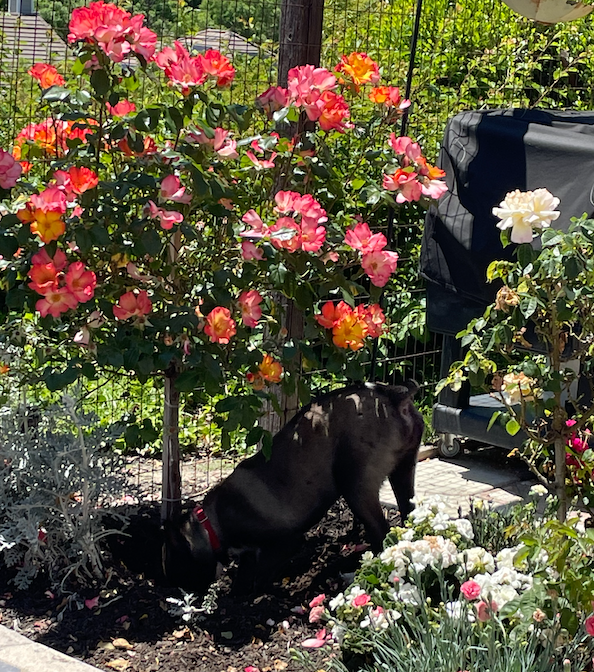Before we had dog behaviorists to analyze what our dog’s behavior meant, we may have misinterpreted what our best friends wanted to communicate with us.
Does a wagging tail really mean our dog is happy to see us? Does sitting by the food bowl and barking really signify our dogs are hungry? Could she really be manipulating us to get an extra meal, snack, or treat?
Does a dog who is whining and whimpering need medical care, exercise, love, attention, or a friend?
Are dog owners correct in imposing our feelings and sensations onto our dogs, or do does have they own form of communication?
The research team at The Ranch Pet Resort and Spa sought ought these answers (no, we don’t really have a research team, just a behaviorists who are “in the know” and want to share this information with others)!
Common Dog Behaviors and What They Signify
Tail wagging: you aren’t wrong if you assumed tail wagging is a sign of happiness in a dog. According to pet experts at Pet Helpful, tail wagging also signifies that a dog wants to play, is friendly, or is being submissive. A rapidly wagging tail is indicative of a happy, carefree dog; a steady wagging tail held in a natural position suggests your pup wants to play; and a rapidly wagging tail held in a downward position means your dog is being submissive.
Digging: a digging dog, especially one that is digging in your flower bed, doesn’t mean to be naughty and bothersome! He is reacting out of a natural tendency to bury or uncover a treat or treasure, protect young, cool off, or uncover a small critter. This last behavior is especially common in dogs bred for hunting.

Yawning: A yawning dog doesn’t necessarily need a nap. She may be anxious, confused, stressed, experiencing a new situation or presence that makes her uncomfortable or threatened, or meeting a new dog. Yawning eases pressure and tension. (source).
Panting: a dog can’t sweat like a human, so it pants to cool itself and to avoid overheating. A dog may also pant if it is in pain or about to deliver a litter of puppies.
Staring: Most parents have taught their kids that staring is rude! But be aware that a dog who stares at you can either be showing aggression, love, or submissiveness, or awareness. A dog who stares with wide eyes is alert; if he shows the whites of his eyes he most likely feels threatened and may be prone to attack. A dog whose stare is intense and narrows is trying to dominate you. A polite or submissive dog will look away after staring for a brief time. Should your dog blink at you, she is showing how much she loves you, that she wants to play, or both!
Showing the belly: A dog who lays on its back feels safe and secure. This is a very vulnerable position and expresses deep comfort and relaxation and trust. He may also be signifying to you or another dog that he has accepted a more submissive role, that he is cooling himself off, or he is just more comfortable sleeping on his back. Like humans, dogs have preferred comfort positions when sleeping.
Raised hackles: Raised hackles are a result of a surge in adrenaline either from fear, curiosity, excitement, arousal, or if it’s a hunting dog, smelling prey (source).
Licking: Dogs lick, it’s what they do. The important piece of information is why dogs lick. Dogs lick themselves to groom, relieve allergies, clean a sore, and to feel calm and relaxed. If you are the lucky recipient of a dog’s lick, it means your dog loves you and wants to bond with you. Licking is a natural and instinctive action and a way for your dog to express itself (source).
Pay Attention to Your Dogs Behaviors
While this list of dog behaviors is only a short one, and we may never understand why dogs behave the ways they do, it’s more important to pay attention to your dog and the conditions under which it behaves.
The more you understand about your dog’s behaviors, the better of a relationship you have with your dog. A better-behaved dog makes for a happy dog-human relationship.

